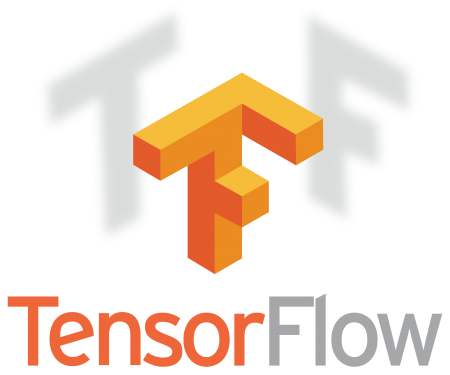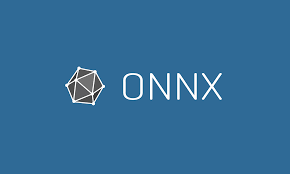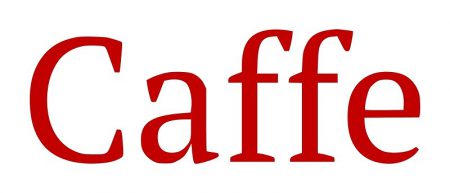

Top 11 Deep Learning Frameworks to Watch in 2025






As of today, both Machine Learning, as well as Predictive Analytics, are imbibed in the majority of business operations and have proved to be quite integral. However, it is Artificial Intelligence with the right deep learning frameworks, which amplifies the overall scale of what can be further achieved and obtained within those domains.
Artificial intelligence and machine learning are no more mere buzzwords. In the last few years, the count of companies implementing machine learning algorithms to make sense of increasing amounts of data has grown exponentially.
Artificial intelligence solutions powered by deep learning frameworks have the potential to transform industries and provide organizations with a competitive edge in the market.
Shallow architecture algorithms are being transformed into deep architecture models with multiple layers to create end-to-end learning and analyzing models. This has made applications smarter and more intelligent.
With unlimited application domains like value prediction, speech and image processing and recognition, natural language understanding, sentiment analysis, financial strategizing, gene mapping, fraud detection, translation, and more, deep learning is being extensively used by companies to train algorithms.
Given that deep learning is the key to executing tasks of a higher level of sophistication, building and deploying them successfully proves to be quite the herculean challenge for data scientists and data engineers across the globe. Today, we have a myriad of frameworks at our disposal that allows us to develop tools that can offer a better level of abstraction along with simplification of difficult programming challenges.
A deep learning framework is a software library or tool that provides building blocks to design, train, and validate deep neural networks. It simplifies complex mathematical operations, model architecture setup, and GPU acceleration, making it easier for developers and researchers to build AI models.
Popular frameworks like TensorFlow, PyTorch, and Keras offer pre-built components, optimization algorithms, and APIs to streamline development, allowing users to focus on model innovation rather than low-level programming.
Using a deep learning framework streamlines the development of neural networks by handling complex tasks like tensor operations, backpropagation, and hardware acceleration.
It saves time, reduces coding errors, and provides pre-built modules for common functions, enabling faster experimentation and deployment.
Frameworks like TensorFlow and PyTorch also support scalability, integration with cloud platforms, and strong community support, making them ideal for both research and production environments in AI development.
Each framework is built in a different manner for different purposes. Here, we look at some of the most popular 11 deep learning frameworks (in no particular order) for you to get a better idea of which one of the following is a popular deep learning framework and is the perfect fit for solving your business challenges.

TensorFlow is inarguably one of the most popular deep learning frameworks. Developed by the Google Brain team, TensorFlow supports languages such as Python, C++, and R to create deep learning models along with wrapper libraries. It is available on both desktop and mobile.
The most well-known use case of TensorFlow has got to be Google Translate coupled with capabilities such as natural language processing, text classification, summarization, speech/image/handwriting recognition, forecasting, and tagging.
TensorFlow’s visualization toolkit, TensorBoard, provides effective data visualization of network modeling and performance.
TensorFlow Serving, another tool of TensorFlow, is used for the rapid deployment of new algorithms/experiments while retaining the same server architecture and APIs. It also provides integration with other TensorFlow models, which is different from the conventional practices and can be extended to serve other models and data types.
TensorFlow is one of the most preferred deep learning frameworks as it is Python-based, supported by Google, and comes loaded with top-notch documentation and walkthroughs to guide you.

Torch is a scientific computing framework that offers broad support for machine learning algorithms. It is a Lua based deep learning framework and is used widely amongst industry giants such as Facebook, Twitter, and Google.
It employs CUDA along with C/C++ libraries for the processing and was made to scale the production of building models and overall flexibility. As opposed to Torch, PyTorch runs on Python, which means that anyone with a basic understanding of Python can get started on building their deep learning models.
In recent years, PyTorch has seen a high level of adoption within the deep learning framework community and is considered to be quite the competitor to TensorFlow. PyTorch is basically a port to Torch deep learning framework used for constructing deep neural networks and executing tensor computations that are high in terms of complexity.
Given the PyTorch framework’s architectural style, the entire deep modeling process is far more straightforward as well as transparent in comparison to Torch.

The j in Deeplearning4j stands for Java. Needless to say, it is a deep learning library for the Java Virtual Machine (JVM). It is developed in Java and supports other JVM languages like Scala, Clojure, and Kotlin.
Parallel training through iterative reduces, micro-service architecture adaption coupled with distributed CPUs and GPUs are some of the salient features when it comes to Eclipse Deeplearning4j deep learning framework.
Widely adopted as a commercial, industry-focused, and distributed deep learning platform, Deeplearning4j comes with deep network support through RBM, DBN, Convolution Neural Networks (CNN), Recurrent Neural Networks (RNN), Recursive Neural Tensor Network (RNTN) and Long Short-Term Memory (LTSM).
Since this deep learning framework is implemented in Java, it is much more efficient in comparison to Python. When it comes to image recognition tasks using multiple GPUs, DL4J is as fast as Caffe. This framework shows matchless potential for image recognition, fraud detection, text-mining, parts of speech tagging, and natural language processing.
With Java as your core programming language, you should undoubtedly opt for this deep learning framework if you’re looking for a robust and effective method of deploying your deep learning models to production.

CNTK is undoubtedly one of the most popular deep learning frameworks, known for its easy training and use of a combination of popular model types across servers. The Microsoft Cognitive Toolkit (earlier known as CNTK) is an open-source framework for training deep learning models. It performs efficient Convolution Neural Networks and training for image, speech, and text-based data.
Given its coherent use of resources, the implementation of Reinforcement Learning models or Generative Adversarial Networks (GANs) can be done quickly using the toolkit. The Microsoft Cognitive Toolkit is known to provide higher performance and scalability as compared to toolkits like Theano or TensorFlow while operating on multiple machines.
When it comes to inventing new complex layer types, the users don’t need to implement them in a low-level language due to the fine granularity of the building blocks. The Microsoft Cognitive Toolkit supports both RNN and CNN type of neural models and is thus capable of handling image, handwriting, and speech recognition problems. Currently, due to the lack of support on ARM architecture, the capability on mobile is relatively limited.

Keras library was developed, keeping quick experimentation as its USP. Written in Python, the Keras neural networks library supports both convolutional and recurrent networks that are capable of running on either TensorFlow or Theano.
As the TensorFlow interface is tad challenging and can be intricate for new users, Keras deep learning framework was built to provide a simplistic interface for quick prototyping by constructing active neural networks that can work with TensorFlow.
In a nutshell, Keras is lightweight, easy-to-use, and has a minimalist approach. These are the very reasons as to why Keras is a part of TensorFlow’s core API.
The primary usage of Keras is in classification, text generation, and summarization, tagging, translation along with speech recognition, and others. If you happen to be a developer with some experience in Python and wish to delve into deep learning, Keras is something you should definitely check out.

ONNX or the Open Neural Network Exchange was developed as an open-source deep learning ecosystem. Developed by Microsoft and Facebook, ONNX proves to be a deep learning framework that enables developers to switch easily between platforms.
This deep learning framework comes with definitions on in-built operators, standard data types as well as definitions of an expandable computation graph model. ONNX models are natively supported in The Microsoft Cognitive Toolkit, Caffe2, MXNet, and PyTorch. It also provides converters for different machine learning frameworks like TensorFlow, CoreML, Keras, and Sci-kit Learn.
ONNX has gained popularity owing to its flexibility and interoperability. Using ONNX, one can easily convert their pre-trained model into a file, which can then be merged with their app. ONNX is a powerful tool that prevents framework lock-in by providing easier access to hardware optimization and enabling model sharing.

Designed specifically for high efficiency, productivity, and flexibility, MXNet (pronounced as mix-net) is a deep learning framework that is supported by Python, R, C++, and Julia.
What makes MXNet one of the most preferred deep learning frameworks is its functionality of distributed training. It provides near-linear scaling efficiency, which utilizes the hardware to its greatest extent.
It also enables the user to code in a variety of programming languages (Python, C++, R, Julia, and Scala, to name a few). This means that you can train your deep learning models with whichever language you are comfortable in without having to learn something new from scratch.
With the backend written in C++ and CUDA, MXNet is able to scale and work with a myriad of GPUs, which makes it indispensable to enterprises. Case in point – Amazon employed MXNet as its reference library for deep learning.
MXNet supports Long Short-Term Memory (LTSM) networks, along with both RNN and CNN. This deep learning framework is known for its capabilities in imaging, handwriting/speech recognition, forecasting as well as NLP.

Well known for its laser-like speed, Caffe is a deep learning framework that is supported with interfaces like C, C++, Python, MATLAB, and Command Line. Its applicability in modeling Convolution Neural Networks (CNN) and its speed has made it popular in recent years.
The most significant benefit of using Caffe’s C++ library is accessing the deep net repository ‘Caffe Model Zoo.’ Caffe Model Zoo contains networks that are pre-trained and can be used immediately. Whether it is modeling CNNs or solving image processing issues, this has got to be the go-to library.
Caffe’s biggest USP is speed. It can process over sixty million images on a daily basis with a single Nvidia K40 GPU. That’s 1 ms/image for inference, and 4 ms/image for learning and more recent library versions are even faster.
Caffe is a popular deep learning network for vision recognition. However, Caffe does not support fine granularity network layers like those found in TensorFlow or CNTK. Given the architecture, the overall support for recurrent networks and language modeling is quite poor, and establishing complex layer types has to be done in a low-level language.
Sonnet is an advanced library developed by DeepMind to create complex neural network structures. This framework functions atop TensorFlow, developing primary Python objects that correspond to distinct components of a neural network.
Subsequently, the TensorFlow computational graph independently integrates these Python objects. Therefore, the development of Python objects is bifurcated by integrating them with their graph structure, streamlining the development of complex architectures. Such features make Sonnet a premium choice amongst Deep Learning frameworks.
Gluon is an open-source deep learning interface that facilitates the quick and easy development of machine learning models. It offers a concise and streamlined API for defining ML/DL models by leveraging various existing and optimizable neural network components.
Users can create neural networks using concise, simple, and clear codes. It offers a wide range of plug-and-play neural network building blocks comprised of predefined layers such as layers, optimizers, and initializers. This assists with eliminating many underlying complications with implementation.
Developed in Python and on top of the NumPy and CuPy libraries, Chainer is an open-source deep learning framework. It introduced the define-by-run approach. With this, the matrix multiplication and nonlinear activations, i.e., the networks’s fixed connections between mathematical operations, are defined first. This is followed by the execution of the actual training computation.
Gaining proficiency in these frameworks can guide you through deep learning interviews and help you identify the ones that are not a deep learning framework.
It is reasonably evident that the advent of Deep Learning has initiated many practical use cases of Machine Learning and Artificial Intelligence in general. Breaking down tasks in the simplest ways in order to assist machines in the most efficient manner has been made likely by Deep Learning.
That being said, which deep learning framework from the above list would best suit your requirements? The answer to that lies on a number of factors, however, if you are looking to just get started, then a Python based deep learning framework like TensorFlow or Chainer should be your choice. If you happen to be seasoned, you need to consider speed, resource requirement, and usage along with the coherence of the trained model before picking out the best deep learning framework.
As per the latest trends, PyTorch is one of the fastest-growing deep learning frameworks. Factors like ease of use, strong community and ecosystem, integration with other tools, and educational resources have contributed to its widespread adoption in academia and industry.
PyTorch functions on reverse-mode automatic differentiation, making it simple to debug and well-adapted for business applications.
Here are a few pointers to consider while selecting a deep learning framework for your business needs.
Deep learning frameworks can be integrated with existing business systems. Businesses can then leverage this integration to enhance business operations, customer experiences, and decision-making processes. These advanced machine learning techniques can improve their capabilities in predictive maintenance, personalized marketing, fraud detection, and customer service.
Your team expertise guides your learning curve, project scale impacts robustness and performance requirements, and deployment requirements ensure seamless integration and environment suitability.
PyTorch, known for its flexibility and customizability, MXNet for its versatility, and Caffe for its optimization techniques, are great alternatives to TensorFlow's current offerings.
PyTorch is a preferred choice for research and dynamic projects, while TensorFlow is the best choice for large-scale and production environments.
With large-scale projects, TensorFlow is faster due to its optimized execution engine that uses static graphs.


